Sensor Sweep: Sword & Sorcery, John the Balladeer, Le Fanu, Atomic Werewolves
Monday , 6, November 2023 Sensor Sweep Leave a comment Sword & Sorcery (Pulp Super Fan): Robert E. Howard expert Morgan Holmes discusses sword and sorcery stories appearing in Weird Tales. 2023 marks the 100th anniversary of the fantasy and horror-fiction magazine.
Sword & Sorcery (Pulp Super Fan): Robert E. Howard expert Morgan Holmes discusses sword and sorcery stories appearing in Weird Tales. 2023 marks the 100th anniversary of the fantasy and horror-fiction magazine.
RPG (Modiphius): Welcome to another chilling edition of Halloween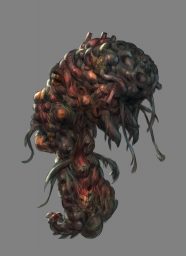 Horrors – are you ready to be terrorised as Achtung! Cthulhu presents its now annual offering of ghosts, ghouls, and things that go bump in the night!? This year we’ve a special treat with five FREE fantastically frightening Halloween Horrors from the devious mind of acclaimed horror writer Bill Heron, all ready to unleash a reign of fantastically frightening Halloween Horrors from the devious mind of acclaimed horror writer Bill Heron, all ready to unleash a reign of terror to your RPG games!
Horrors – are you ready to be terrorised as Achtung! Cthulhu presents its now annual offering of ghosts, ghouls, and things that go bump in the night!? This year we’ve a special treat with five FREE fantastically frightening Halloween Horrors from the devious mind of acclaimed horror writer Bill Heron, all ready to unleash a reign of fantastically frightening Halloween Horrors from the devious mind of acclaimed horror writer Bill Heron, all ready to unleash a reign of terror to your RPG games!
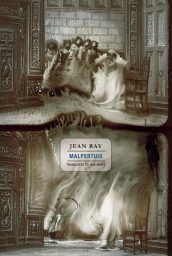 Fiction (DMR Books): Though he wrote over a hundred short stories and numerous comic strip scenarios, Jean Ray wrote only two novels: Malpertuis and The City of Unspeakable Fear. Born Raymundus Johannes de Kremer, Ray was a major of the Belgian School of the Strange. He is considered a Francophone equivalent to Poe or Lovecraft.
Fiction (DMR Books): Though he wrote over a hundred short stories and numerous comic strip scenarios, Jean Ray wrote only two novels: Malpertuis and The City of Unspeakable Fear. Born Raymundus Johannes de Kremer, Ray was a major of the Belgian School of the Strange. He is considered a Francophone equivalent to Poe or Lovecraft.
Horror (Strange at Ecbatan): I also have enjoyed Shirley Jackson’s short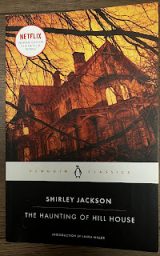 fiction, and so have thought for some time that I need to read some of her novels (primarily this one and We Have Always Lived in the Castle, the two that seem best regarded among her ouevre.) And, finally, one of my favorite writers, Elizabeth Hand, just wrote an authorized sequel to The Haunting of Hill House — A Haunting on the Hill. This provided the final spur to to reading Jackson’s novel.
fiction, and so have thought for some time that I need to read some of her novels (primarily this one and We Have Always Lived in the Castle, the two that seem best regarded among her ouevre.) And, finally, one of my favorite writers, Elizabeth Hand, just wrote an authorized sequel to The Haunting of Hill House — A Haunting on the Hill. This provided the final spur to to reading Jackson’s novel.
RPG (Saves Dragon): On the whole, I find that alignment alone (even dual axis alignment) doesn’t really help a DM in knowing how to play a monster during encounters. To that end, as part of the Expanded Creature Cache stat block, I’m playing around with the ideas of “Motivation” and “Disposition.” Then, in combination with the classic Monster Manual stats (like Intelligence), you start to get a better idea of how to play the monster.
Tolkien (In Deep Geek): Tolkien’s Steampunk Numenor.
T.V. (Balladeer’s Blog): SPACE COMMAND (1953-1954) – Long, long before the recent television series of this name came Canada’s Space Command. James “Scotty” Doohan was Phil Mitchell, Robert Barclay played Frank Anderson, the 20-something young man who was the ostensible star of the show, Harry Geldard portrayed Captain Steve Cassell and Austin Willis was Dr. Fleming.
Fantasy (Frontier Partisans): In John the Balladeer, Manly Wade Wellman created one of the great characters in all of horror and fantasy literature. Armed with his silver-stringed guitar and an endless trove of folk songs, John travels the backwoods of Appalachia, battling supernatural evil with his own brand of down-home charm and endless resourcefulness.
created one of the great characters in all of horror and fantasy literature. Armed with his silver-stringed guitar and an endless trove of folk songs, John travels the backwoods of Appalachia, battling supernatural evil with his own brand of down-home charm and endless resourcefulness.
Games (Monsters & Manuals): One of the interesting functions of war is to bring together people from far-flung reaches of a state or empire for the completion of a single purpose, and it thus serves as a homogenising force. In Robert Graves’ Goodbye to All That, for instance, he describes how some of his Welsh troopers could barely speak English when conscripted and sent to the Western Front; the war Anglicised them.
Pulp (Pulp Super Fan): Barbary Gold is another by the “King of Pulps” H. Bedford-Jones (1887-1949), an adventure novella reprinted by Steeger Books in their H. Bedford-Jones Library. It was cover-featured in the March 25, 1919, issue of People’s Favorite Magazine, and the cover by Modest Stein was used for the reprint. The story concerns a trio of men during the later years of WWI looking for a German U-boat sunken off the Barbary Coast with a cargo of gold bullion.
Bedford-Jones (1887-1949), an adventure novella reprinted by Steeger Books in their H. Bedford-Jones Library. It was cover-featured in the March 25, 1919, issue of People’s Favorite Magazine, and the cover by Modest Stein was used for the reprint. The story concerns a trio of men during the later years of WWI looking for a German U-boat sunken off the Barbary Coast with a cargo of gold bullion.
 History (J P Fukudai): In The Year 1000: When Explorers Connected the World and Globalization Began (2020), Valerie Hansen is out to prove that “The year 1000 marked the start of globalization. This is when trade routes took shape all around the world that allowed goods, technologies, religions, and people to leave home and go somewhere new.” She also wants to connect how cultures strategized globalization around 1000 with how we are dealing with it today: “living in a world shaped by the events of the year 1000, we are wrestling with exactly the same challenges that people faced for the first time then.
History (J P Fukudai): In The Year 1000: When Explorers Connected the World and Globalization Began (2020), Valerie Hansen is out to prove that “The year 1000 marked the start of globalization. This is when trade routes took shape all around the world that allowed goods, technologies, religions, and people to leave home and go somewhere new.” She also wants to connect how cultures strategized globalization around 1000 with how we are dealing with it today: “living in a world shaped by the events of the year 1000, we are wrestling with exactly the same challenges that people faced for the first time then.
Weird Tales (Sprague de Camp Fan): Stephen Jones, a Londoner, writes the latest biographic look at Robert E. Howard (and H. P. Lovecraft and Clark Ashton Smith) and gets my nod as the best short biographer so far. There is nothing really new to me here. I’ve been reading about “The Weird Tales Boys” since the 1970s, so I’m fairly knowledgably. But I like the way these three geniuses were presented here.
latest biographic look at Robert E. Howard (and H. P. Lovecraft and Clark Ashton Smith) and gets my nod as the best short biographer so far. There is nothing really new to me here. I’ve been reading about “The Weird Tales Boys” since the 1970s, so I’m fairly knowledgably. But I like the way these three geniuses were presented here.
Fantasy (Dark Worlds Quarterly): I don’t waste much time on defining Sword & Sorcery but it seems to be a thing again on the Internet. Men like Lin Carter and L. Sprague de Camp spent a goodly amount of time on it back in the 1960s so I didn’t need to. But it’s back again. And perhaps for different reasons.
Horror (Worm Woodiana): Although most of his novels were properly attributed upon publication between hardcovers[i] within a year of their serialization, only a few of Joseph Sheridan Le Fanu’s many short stories and novellas were credited to him upon his death on 7 February 1873, leaving the majority languishing anonymously in a variety of magazines.
upon publication between hardcovers[i] within a year of their serialization, only a few of Joseph Sheridan Le Fanu’s many short stories and novellas were credited to him upon his death on 7 February 1873, leaving the majority languishing anonymously in a variety of magazines.
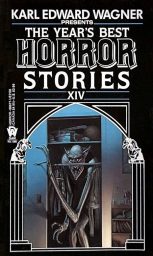 Horror (Black Gate): The Year’s Best Horror Stories XIV was the fourteenth in the DAW Year’s Best Horror series and the seventh volume edited by the great Karl Edward Wagner (d. 1994). The book was copyrighted and printed in 1986. This volume marked Michael Whelan’s eleventh cover for the series, which presents a pretty horrifying monster-in-the-closet, something out of any 11-year old’s worst nightmares! The cover layout is the most marked design change yet in the series. The format and font are very different from previous volumes, and the colon and word “Series” have been dropped completely. Why?
Horror (Black Gate): The Year’s Best Horror Stories XIV was the fourteenth in the DAW Year’s Best Horror series and the seventh volume edited by the great Karl Edward Wagner (d. 1994). The book was copyrighted and printed in 1986. This volume marked Michael Whelan’s eleventh cover for the series, which presents a pretty horrifying monster-in-the-closet, something out of any 11-year old’s worst nightmares! The cover layout is the most marked design change yet in the series. The format and font are very different from previous volumes, and the colon and word “Series” have been dropped completely. Why?
D&D (DM David): In 1980, TSR published Deities & Demigods complete with sections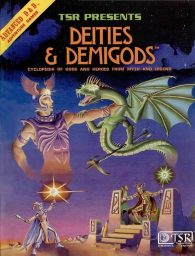 describing the Melnibonéan mythos of Elric and H.P. Lovecraft’s Cthulhu mythos. Meanwhile, another game publisher, Chaosium, prepared to release the licensed games Stormbringer and Call of Cthulhu based on the same stories. They sent cease-and-desist letters to TSR.
describing the Melnibonéan mythos of Elric and H.P. Lovecraft’s Cthulhu mythos. Meanwhile, another game publisher, Chaosium, prepared to release the licensed games Stormbringer and Call of Cthulhu based on the same stories. They sent cease-and-desist letters to TSR.
Pulp (Dark Worlds Quarterly): Lester Dent (and the other Kenneth Robeson’s who penned the Doc Savage super-sagas) was always conscious of a certain atmospheric need in a good story. The culprits always turn out to be humans with a new device or some other rational explanation, but like a good Gothic thriller, you won’t know just what is going on until the end. Goblins, Spooks, Monsters, Terrors all show up in the titles of these Pulps.
Men’s Magazines (Paperback Warrior): The pulp-fiction and men’s action-adventure connoisseurs Robert Deis and Wyatt Doyle are back at it again with a brand new volume for their Men’s Adventure Library series (published by New Texture). The book is aptly titled Atomic Werewolves and Man-Eating Plants and it is a beautiful collection of vintage men’s adventure magazine stories about ghosts, aliens, robots, vampires, werewolves, and creepy rats. Like many of their prior offerings, this book is available in an expanded hardcover edition as well as paperback.
connoisseurs Robert Deis and Wyatt Doyle are back at it again with a brand new volume for their Men’s Adventure Library series (published by New Texture). The book is aptly titled Atomic Werewolves and Man-Eating Plants and it is a beautiful collection of vintage men’s adventure magazine stories about ghosts, aliens, robots, vampires, werewolves, and creepy rats. Like many of their prior offerings, this book is available in an expanded hardcover edition as well as paperback.
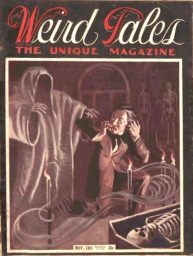 Weird Tales (Tellers of Weird Tales): There are seventeen stories in the November 1923 issue of Weird Tales, plus “The Eyrie,” the second installment of the feature “Weird Crimes” by Seabury Quinn, and eleven uncredited non-fiction fillers. The cover art was by the as yet unidentified artist Washburn, his or her only cover for “The Unique Magazine.” Once again, all of the interior art was by William F. Heitman (1878-1945).
Weird Tales (Tellers of Weird Tales): There are seventeen stories in the November 1923 issue of Weird Tales, plus “The Eyrie,” the second installment of the feature “Weird Crimes” by Seabury Quinn, and eleven uncredited non-fiction fillers. The cover art was by the as yet unidentified artist Washburn, his or her only cover for “The Unique Magazine.” Once again, all of the interior art was by William F. Heitman (1878-1945).
Men’s Magazines (Mens Pulp Mags): Ah, the age-old tale of a man turned robot seeking revenge. Because, let’s face it, being a regular human seeking revenge is just too overdone. “The Man Who Couldn’t Die” by Gardner F. Fox gives us a peek into what happens when you mix a criminal’s brain, a robot’s body, and a sprinkle of good ol’ fashioned 1961 male ego. Spoiler alert: It’s as chaotic as it sounds.
robot seeking revenge. Because, let’s face it, being a regular human seeking revenge is just too overdone. “The Man Who Couldn’t Die” by Gardner F. Fox gives us a peek into what happens when you mix a criminal’s brain, a robot’s body, and a sprinkle of good ol’ fashioned 1961 male ego. Spoiler alert: It’s as chaotic as it sounds.
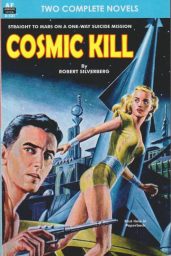 Science Fiction (Vintage Pop Fictions): Robert Silverberg wrote Cosmic Kill for the April 1957 issue of the pulp magazine Amazing Stories. He had been given two days to write the novella and with the aid of handfuls of benzedrine tablets he made the deadline. Lon Archman has been given a top-secret (and entirely illegal) mission by Earth’s Universal Intelligence Agency.
Science Fiction (Vintage Pop Fictions): Robert Silverberg wrote Cosmic Kill for the April 1957 issue of the pulp magazine Amazing Stories. He had been given two days to write the novella and with the aid of handfuls of benzedrine tablets he made the deadline. Lon Archman has been given a top-secret (and entirely illegal) mission by Earth’s Universal Intelligence Agency.
Fantasy (Por Por Books): ‘The Fires of Lan-Kern’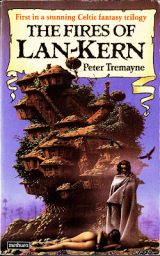 first was published in the U.K. in 1980. This Methuen paperback (272 pp.) was issued in 1984, and features striking cover art by Tim White. The succeeding volumes in the Lan-Kern Trilogy include ‘The Destroyers of Lan-Kern’ (1982) and ‘The Buccaneers of Lan-Kern’ (1984). None of the Lan-Kern titles ever were issued as paperbacks in the U.S.
first was published in the U.K. in 1980. This Methuen paperback (272 pp.) was issued in 1984, and features striking cover art by Tim White. The succeeding volumes in the Lan-Kern Trilogy include ‘The Destroyers of Lan-Kern’ (1982) and ‘The Buccaneers of Lan-Kern’ (1984). None of the Lan-Kern titles ever were issued as paperbacks in the U.S.
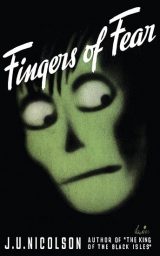 Horror (Fantasy Literature): Unlike some of those other titles, Fingers of Fear has not been quite so difficult to acquire over the decades. The book was originally released in 1937 by the NY-based publisher Covici-Friede; a $2 hardcover with memorable cover art by one Arthur Hawkins. After going OOPs (out of prints) for almost 30 years, it was revived in 1966 for the Paperback Library Gothic series, sporting one of those woman-fleeing-from-spooky-looking-house covers (perhaps you’re familiar with the kind I mean?), this one by George Ziel.
Horror (Fantasy Literature): Unlike some of those other titles, Fingers of Fear has not been quite so difficult to acquire over the decades. The book was originally released in 1937 by the NY-based publisher Covici-Friede; a $2 hardcover with memorable cover art by one Arthur Hawkins. After going OOPs (out of prints) for almost 30 years, it was revived in 1966 for the Paperback Library Gothic series, sporting one of those woman-fleeing-from-spooky-looking-house covers (perhaps you’re familiar with the kind I mean?), this one by George Ziel.
Comic Books (Bounding Into Comics): Ablaze announced they will publish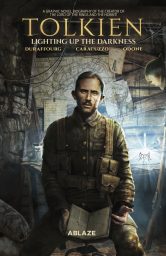 a new graphic novel biography, Tolkien: Lighting Up The Darkness, documenting the life of The Lord of the Rings creator J.R.R. Tolkien. According to a press release, “The biography vividly explores the youth of John Ronald Reuel Tolkien, the author of The Lord of the Rings saga, and his traumatic experience of the battlefields of the First World War, which forged the imagination of his later literary works.”
a new graphic novel biography, Tolkien: Lighting Up The Darkness, documenting the life of The Lord of the Rings creator J.R.R. Tolkien. According to a press release, “The biography vividly explores the youth of John Ronald Reuel Tolkien, the author of The Lord of the Rings saga, and his traumatic experience of the battlefields of the First World War, which forged the imagination of his later literary works.”
Fantasy (Ken Lizzi): The Thieves World series made a splash in the eighties with its stories of anti-heroes, burglars, wizards, crime lords, warriors, bards, various underworld denizens, and the occasional common, law abiding (more or less) citizen of Sanctuary. Will Shetterly and Emma Bull, et al, decided to see if they could recreate that Thieves World magic with Liavek, a mercantile port city with a hyper detailed history, culture, and — most notably — a magic system. I read the first couple collections when they first came out. How does volume one hold up on a re-read? Let’s find out.
Please give us your valuable comment